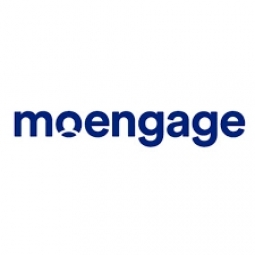Technology Category
- Networks & Connectivity - 5G
- Platform as a Service (PaaS) - Application Development Platforms
Applicable Functions
- Sales & Marketing
Use Cases
- Machine to Machine Payments
About The Customer
Ayopop is a rapidly growing mobile bill payments platform based in Indonesia. The company provides a platform for users to pay their bills conveniently through their mobile devices. Ayopop aims to increase its active user base and drive growth by reducing cart abandonment and increasing transactions. The company is focused on leveraging advanced technologies such as AI and marketing automation to enhance user engagement and retention. Ayopop's goal is to provide a seamless and personalized user experience, encouraging users to complete their transactions and remain engaged with the platform over their lifetime.
The Challenge
Ayopop, Indonesia’s fastest growing mobile bill payments platform, was facing a significant challenge in increasing its active user base, reducing cart abandonment, and driving growth. The company needed to identify users who had abandoned their transactions midway and find a way to bring them back to complete their transactions. Additionally, Ayopop wanted to leverage marketing automation solutions to not only bring these users back but also keep them engaged over their lifetime. The challenge was to find a solution that could effectively address these issues and help Ayopop meet its business objectives.
The Solution
Ayopop turned to AI-powered marketing engagement by MoEngage to tackle its challenges. The company used Sherpa by MoEngage, a platform that allowed Ayopop to drive higher conversions and growth through personalized engagement with the user. Ayopop used Sherpa to send personalized push notifications to users identified under three segments. These notifications were designed to bring back users and drive growth through sustained engagement. For cart abandonment, personalized push notifications were sent after two hours to users who did not complete a transaction. These notifications were personalized with reminders and recommendations around similar products the user was searching for. Sherpa optimized multiple variations of the push notifications and provided an uplift of 31% to conversion goals. For cross-selling, Sherpa enabled Ayopop to reach out to users with personalized recommendations for sustained engagement. Lastly, for product reminders, notifications were sent to users who were nearing the end of their subscriptions.
Operational Impact
Quantitative Benefit

Case Study missing?
Start adding your own!
Register with your work email and create a new case study profile for your business.
Related Case Studies.

Case Study
Creating an Agile Environment to Drive Growth in the IoT
Numerex needed to provide innovative products and service offerings and adapt to the explosive growth in the IoT/M2M ecosystem. As Numerex was transforming into delivering on-demand offerings to its wide range of markets, they realized their back office systems weren’t capable of providing flexible feature sets, critical to helping turn up new product catalogue configurations to close deals and better manage service offerings. An example of this needed flexibility would allow a Numerex customer to buy devices in bulk yet only pay for those that actively use data on the network. Their systems required significant development efforts to introduce new service offerings such as this. They had segregated billing systems that didn’t scale for high volume processing requirements. Numerex was also growing via M&As, which brought the additional challenges of outdated technologies and a variety of disparate billing systems that didn’t talk to each other, resulting in complex operational expenditures and integration requirements. It became so dire that Numerex was forced to implement manual billing processes for certain lines of business.

Case Study
The Hub of Cloud Communications
SimpleSignal delivers services through multiple channels, whether that’s through wholesale partners or white labeling or directly to an end user. It’s a wide range of products - large scope - and offered both as usage based and subscription based services. The platform of choice had to have the qualities of traditional telecommunications billing but also the innovation, flexibility and scalability of Software-as-a-Service (SaaS) billing.

Case Study
ANZ Bank's Digital Transformation with Nintex Advanced Workflow
ANZ Bank, one of the top 50 banks in the world and the fastest-growing bank in Indonesia, was facing a challenge with its rapidly increasing transaction volume. The bank's existing business processes and workflow were becoming overwhelmed. Like most banks in Indonesia, ANZ was manually handling document submission and verification. Customers filled out paper loan applications and supporting documents, then delivered them to bank branches by mail or courier. Branch officers traveled to the bank’s headquarters or used postal mail, email, and phone calls to submit loan documents for verification. Lost or inaccurate documents created more emails and phone calls. Additionally, ANZ had to adhere to strict verification and financial regulations, including the Foreign Accounts Compliance Act. This act requires that all banks outside the United States provide key information about U.S. clients, including citizenship validation, to the Internal Revenue Service–a complex yet crucial process.

Case Study
Citibanamex's Digital Transformation: A Mobile-First Strategy with OpenLegacy
Citibanamex, a part of Citibank corporation, was facing a challenge in keeping up with the rapidly evolving Mexican consumer banking market. The bank's primary goal was to deliver a seamless, personalized user experience across both digital and traditional channels. The bank's mobile application rating was a mere 2.0 out of 5, indicating a need for innovative digital offerings to improve the user experience. The bank's core technology stack was a proprietary mainframe system, which ran core business applications such as payments and account management. Over time, modernization projects led to an increasing spiral of complexity with various tools, mainframe gateways, ESBs, middleware, dispatchers, routers, and messaging queues. Each system had a different way of handling the backend legacy platform, making it harder and more cumbersome to integrate with legacy applications. After years of unsuccessful, costly integration attempts, Citibanamex was left with the same needs and challenges, only exacerbated. The focus shifted to the Customer Digital Experience and the End-User Journey, and they needed a partner that could help them rapidly develop and deploy innovative customer offerings on top of their core systems.
Case Study
BBVA: Leveraging Geospatial Data for Innovative Customer Services
BBVA, a global banking and financial services group, was faced with the challenge of adapting to the rapidly changing landscape of digital payments. The bank noticed a significant increase in mobile payments, particularly during the COVID-19 pandemic, with the percentage of customers using this method rising from 4.4% to 23%. As part of its digital transformation journey, BBVA aimed to offer its customers an exceptional range of services and a great banking experience. The bank was already using Google Maps Platform to help customers find their nearest branch or ATM locations, but it wanted to further leverage the potential of Google Maps Platform solutions. BBVA's mobile banking app was used by 71% of its customers in Spain, and was accessed more than 120 million times a month. The bank wanted to provide more information about each customer transaction to offer a better financial experience for digital customers.








